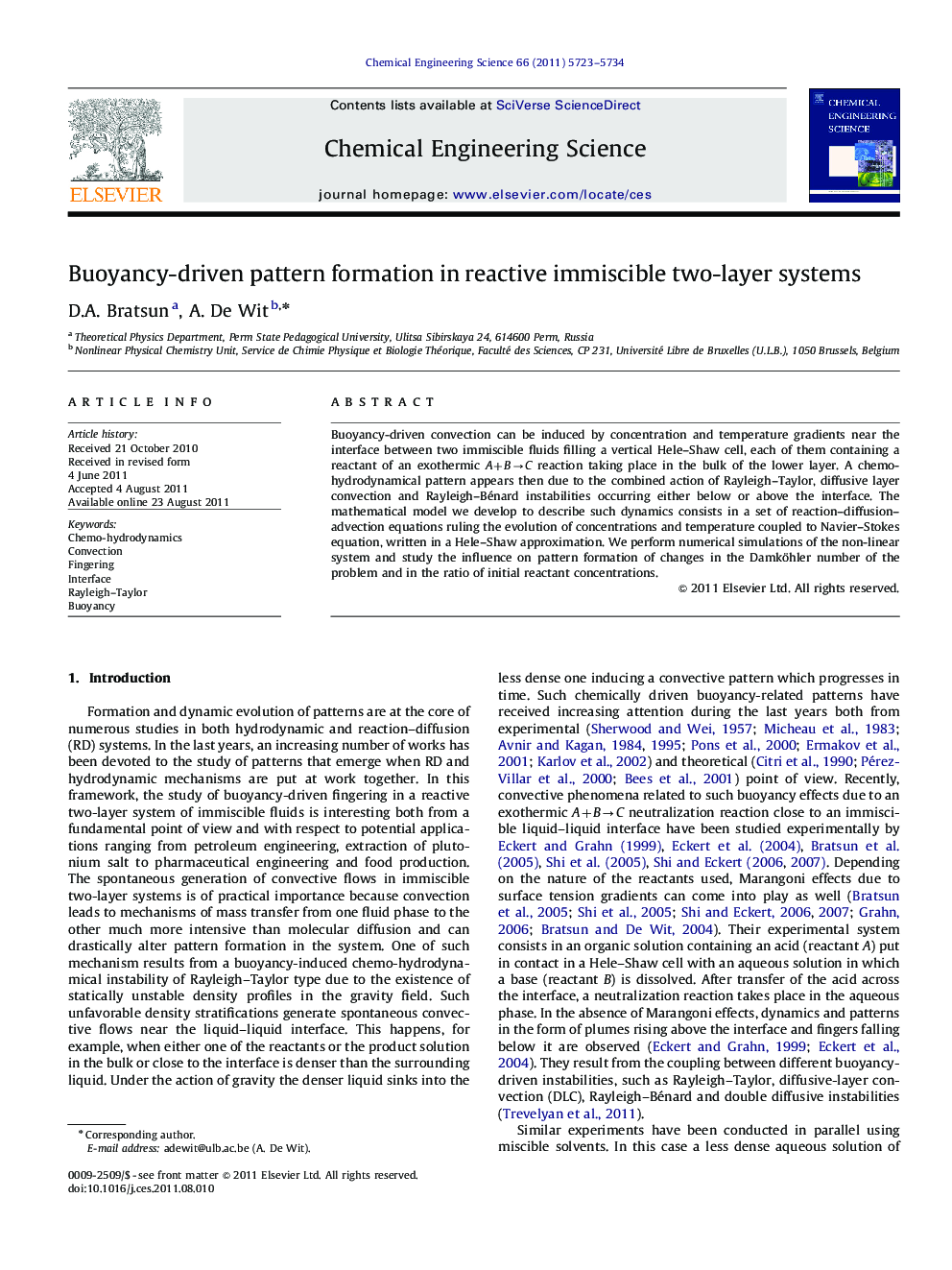| Article ID | Journal | Published Year | Pages | File Type |
|---|---|---|---|---|
| 156151 | Chemical Engineering Science | 2011 | 12 Pages |
Buoyancy-driven convection can be induced by concentration and temperature gradients near the interface between two immiscible fluids filling a vertical Hele–Shaw cell, each of them containing a reactant of an exothermic A+B→CA+B→C reaction taking place in the bulk of the lower layer. A chemo-hydrodynamical pattern appears then due to the combined action of Rayleigh–Taylor, diffusive layer convection and Rayleigh–Bénard instabilities occurring either below or above the interface. The mathematical model we develop to describe such dynamics consists in a set of reaction–diffusion–advection equations ruling the evolution of concentrations and temperature coupled to Navier–Stokes equation, written in a Hele–Shaw approximation. We perform numerical simulations of the non-linear system and study the influence on pattern formation of changes in the Damköhler number of the problem and in the ratio of initial reactant concentrations.
► Convective patterns can result from buoyancy effects in reactive two-layer systems. ► Convection favors transfer and reaction of chemicals across immiscible interfaces. ► Long reactive fingers develop if denser reactants creating convection are in excess. ► Numerical simulations reproduce properties of experimental reactive hydrodynamics.
